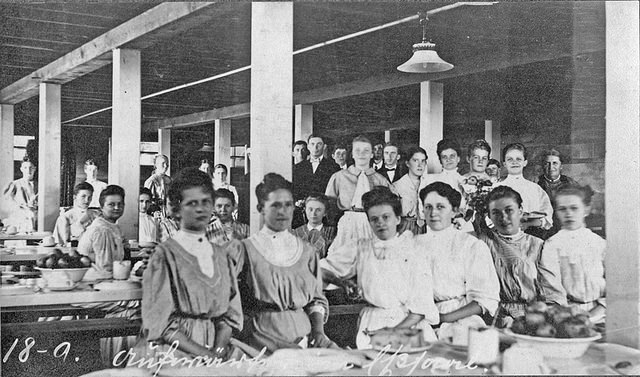By Colleen McFarland
Those of you who know me personally know that I am always on the lookout for interesting recipes to try. At work in the archives, I take special note of collections that contain recipes and sometimes spend a little time searching for hidden culinary delights.
Given the enduring – and perhaps growing – interest in Amish and Mennonite food, I dream of finding long-forgotten recipes that reveal the secret to concocting the perfect shoofly pie. If I worked in the Mennonite Library and Archives in North Newton, Kansas, I would seek to uncover the historical mysteries of Zwiebach and Platz. Unfortunately, my quest for these treasures has largely been unfulfilled. That does not mean, however, that I have not found anything of note. Rather, I have not found what I expected to find, and thatis what I love about working in the archives.
There are, in fact, plenty of recipes to be found among both the manuscripts (personal and family papers) and the official records of the (old) Mennonite Church. In the manuscripts, most of the recipes date from the 19th century and are not what we would call recipes. Rather, they are pharmaceutical formulas to treat various maladies or instructions for important tasks on a farmstead – dyeing wool, making cement, and soothing a horse’s inflamed hoof.
When one thinks about it, it makes tremendous sense that these recipes would come to the archives. These recipes held the knowledge required to survive in an environment without access to trained medical professionals, modern pharmaceuticals, or now common household chemicals. The information they contain was highly prized, as it helped guarantee not the gastronomic satisfaction of a family, but its very existence.

Description: food servers at General Conference Mennonite Church session; 3rd from left, Edith von Steen Date: 1908 Location: Beatrice, Nebraska MLA filing: Conferences – GC – 1908
Recipes found in the denomination’s institutional records have a very different flavor, if you will. These are the recipes of the institutionalized church. These recipes provide us a window into the very practical work of feeding a youth group, a congregation, or an entire conference. One of my favorite recipe collections in the Mennonite Church USA – Goshen Archives is a booklet informally published by the Ontario Conference Women’s Missionary and Service Auxiliary (WMSA) in 1959, entitled, “Large Scale Meal Planning Guide for Local WMSA Food Committees.”
The booklet, requested by the executive body of the WMSA, provides guidance to new members of food committees throughout the (old) Mennonite Church and includes recipes for 150 portions of meatloaf, 100 portions of pork and beans, and 50 portions of apple crisp. This booklet provides evidence that Mennonite women were still expected to provide food for congregational and conference gatherings, even though decreasing family size, increasing urbanization, and other social changes had fundamentally altered Mennonite women’s knowledge.
I have come to terms with the fact that I probably will never find a trove of recipes for previously unknown Mennonite delicacies. The recipes I have found instead offer important insights into the knowledge required by North American Mennonites to endure and adapt to an ever-changing world.


